BMW X3 vs Peugeot 5008 – Erot ja hinnat vertailussa
Kaksi autoa, yksi kaksintaistelu: BMW X3 kohtaa Peugeot 5008.
Kumpi vakuuttaa enemmän suorituskyvyssä, kulutuksessa ja hinta–laatusuhteessa? Selvitä nyt!
The automotive landscape is continuously evolving, with manufacturers striving to create vehicles that meet the varied demands of drivers. In the realm of mid-size SUVs, the BMW X3 and the Peugeot 5008 represent two compelling options, each with its unique set of attributes. Here, we delve into a detailed comparison of these two vehicles, focusing on technical aspects and innovations that make them stand out.
Powertrain and Performance
When it comes to powertrains, the BMW X3 offers an impressive range of options. It features a mix of gasoline, diesel, and hybrid configurations, delivering power outputs between 190 HP and an audacious 510 HP in its performance-oriented models. The 0-100 km/h acceleration times range from a swift 3.8 seconds to a respectable 8.4 seconds, showcasing the X3's ability to cater to those seeking both efficiency and exhilaration.
On the other hand, the Peugeot 5008 presents a more modest but nonetheless capable powertrain lineup, focusing primarily on petrol and hybrid engines. The highest outputs reach 231 HP, with 0-100 km/h times varying from 8.8 seconds to 10.2 seconds. While the 5008 doesn't aim solely for high performance, it offers efficient alternatives with a commendable electric range, especially in hybrid variants that can travel up to 664 km on electric power alone.
Fuel Efficiency and Emissions
Fuel efficiency is a strong suit for both vehicles, but they tackle it differently. The BMW X3, particularly in its hybrid versions, can achieve fuel consumption as low as 2.1 L/100 km, with CO2 emissions dropping to an impressive 21 g/km in its plug-in hybrid variant. This makes the X3 a top choice for those prioritizing environmental responsibility alongside performance.
Conversely, the Peugeot 5008 shines with its electric variants and hybrid models. The most efficient engine can consume as little as 1 L/100 km, and its fully electric configuration produces zero emissions, echoing a strong commitment to sustainability. With CO2 efficiencies classed as A and B, the 5008 effectively positions itself as an eco-friendly family SUV.
Interior Space and Comfort
When it comes to interior space, the Peugeot 5008 takes the lead with its seven-seat configuration, making it ideal for families or those needing extra passenger capacity. With a trunk capacity of 748 liters, the 5008 also offers ample storage space for luggage and other items.
In contrast, the BMW X3 comfortably seats five passengers and provides a trunk space ranging from 450 to 570 liters, depending on the model. While the X3 may not match the 5008 in seating capacity, its interior is designed with a focus on luxury, featuring high-quality materials and cutting-edge technology, aligning with BMW’s premium brand image.
Technological Innovations
Both the BMW X3 and Peugeot 5008 boast advanced technology and features, making driving safer and more enjoyable. The BMW X3 is equipped with the latest in infotainment technology, including a high-resolution touchscreen, voice control, and a comprehensive digital cockpit that integrates driver assistance systems seamlessly. Features like adaptive cruise control and lane-keeping assist help improve driving dynamics, catering to tech-savvy consumers.
Similarly, the Peugeot 5008 is characterized by its innovative i-Cockpit setup, which features a compact steering wheel and an elevated instrument panel, enhancing driver engagement. Enhanced connectivity options, including smartphone integration and advanced navigation systems, ensure that passengers remain entertained and informed on the go.
Conclusion: Choosing Between Luxury and Practicality
Ultimately, the decision between the BMW X3 and the Peugeot 5008 will hinge largely on individual preferences and needs. The X3 appeals to those looking for a luxurious driving experience with powerful performance and advanced technological features. In contrast, the 5008 is an excellent choice for buyers seeking practicality with a focus on sustainability and family-friendly options.
As these two vehicles highlight the diverse offerings available in the SUV market, it's clear that both can carve out a unique niche for themselves. Whether one prioritizes performance or utility, the BMW X3 and Peugeot 5008 stand ready to fulfill those demands.
Tässä mennään yksityiskohtiin: tekniset erot tarkemmin
Kustannukset ja kulutus: Hinta ja tehokkuus ovat usein ensimmäiset valintakriteerit auton ostossa. Tässä näkyy, kumpi malli on pitkällä aikavälillä edullisempi – tankatessa, ladatessa tai hankintahinnassa.
Peugeot 5008 on hinnassa selvästi havaittava edullisempi – sen lähtöhinta on 43900 €, kun taas BMW X3 maksaa 59800 €. Ero on noin 15940 €.
Polttoaineenkulutuksessa näkyy ero: Peugeot 5008 kuluttaa 1 L ja on siten selvä taloudellisempi kuin BMW X3, jonka kulutus on 2.80 L. Ero on noin 1.80 L /100 km.
Toimintamatkassa Peugeot 5008 suoriutuu selvä paremmin: se yltää jopa 674 km:een, noin 586 km enemmän kuin BMW X3.
Moottori ja suorituskyky: Teho, vääntömomentti ja kiihtyvyys ovat autoharrastajien klassisia mittareita – ja erot tulevat tässä hyvin esiin.
Moottoritehossa BMW X3 on pienessä määrin etulyöntiasemassa – 398 hv verrattuna 325 hv:een. Ero on noin 73 hv hv.
Kiihdytyksessä 0–100 km/h BMW X3 on selvä nopeampi – 4.60 s vs. 6.50 s. Ero on noin 1.90 s sekuntia.
Huippunopeudessa BMW X3 on pienessä määrin edellä – se yltää 250 km/h:een, kun taas Peugeot 5008 saavuttaa 220 km/h. Ero on noin 30 km/h.
Vääntömomentissa näkyy myös ero: BMW X3 vetää selvästi havaittava voimakkaammin, 670 Nm verrattuna 511 Nm:een. Eroa on noin 159 Nm.
Tila ja käytännöllisyys: Perheauto vai arjen kumppani – kumpi tarjoaa enemmän tilaa, mukavuutta ja käytettävyyttä?
Istuimet: Peugeot 5008 tarjoaa huomattava enemmän istumapaikkoja – 7 vs. 5.
Omapainossa Peugeot 5008 on pienessä määrin kevyempi – 1700 kg verrattuna 1930 kg:een. Painoero on noin 230 kg.
Tavaratilan koossa Peugeot 5008 tarjoaa selvä enemmän – 994 L verrattuna 570 L:een. Ero on noin 424 L.
Maksimikantavuudessa Peugeot 5008 pärjää ilmeinen paremmin – jopa 2310 L, noin 610 L enemmän kuin BMW X3.
Kantavuudessa Peugeot 5008 on vähän parempi – 699 kg verrattuna 570 kg:een. Ero on noin 129 kg.
Yhteenvetomme: Peugeot 5008 osoittautuu olevan antaa kilpailijalle vähän mahdollisuuksia ja saa siksi tittelin DriveDuel Champion!
Tässä vertailussa Peugeot 5008 on monipuolisempi kokonaisuus.
BMW X3
BMW X3 yhdistää tyylikkään muotoilun ja käytännöllisyyden, mikä tekee siitä erinomaisen valinnan sekä kaupunkiin että maastoon. Sen tilava sisustus tarjoaa mukavuutta matkustajille ja runsaasti tavaratilaa, joten se soveltuu hyvin perheille ja aktiivisille elämäntavoille. Ajodynamiikka on huippuluokkaa, ja X3 tarjoaa nautinnollisia ajokokemuksia kaikissa olosuhteissa.
Tiedot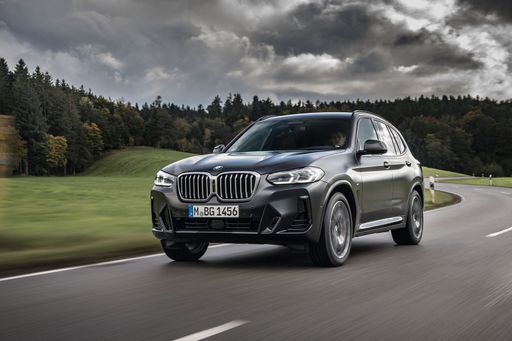 @ press.bmwgroup.com
@ press.bmwgroup.com
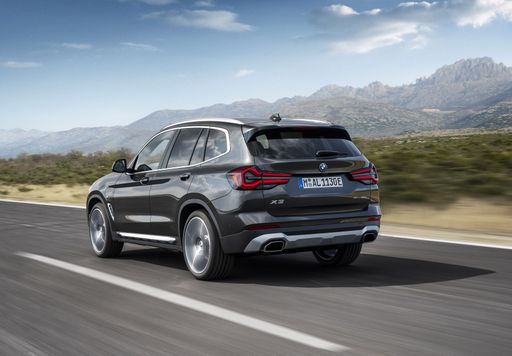 @ press.bmwgroup.com
@ press.bmwgroup.com
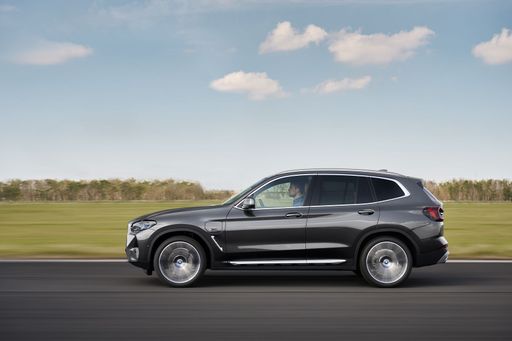 @ press.bmwgroup.com
@ press.bmwgroup.com
 @ press.bmwgroup.com
@ press.bmwgroup.com
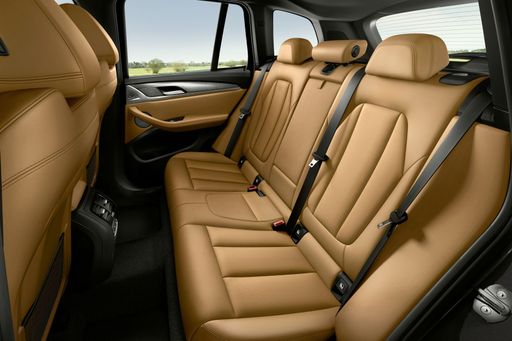 @ press.bmwgroup.com
@ press.bmwgroup.com
Peugeot 5008
Peugeot 5008 yhdistää tyylikkään muotoilun ja käytännöllisyyden, tehden siitä erinomaisen valinnan perheille. Sen tilava sisustus tarjoaa mukavuutta ja monipuolisuutta, mikä tekee pitkistäkin matkoista miellyttäviä. Peugeot 5008 on suunniteltu vastaamaan nykypäivän autokannan tarpeita, erottuen edukseen kilpailijoistaan.
Tiedot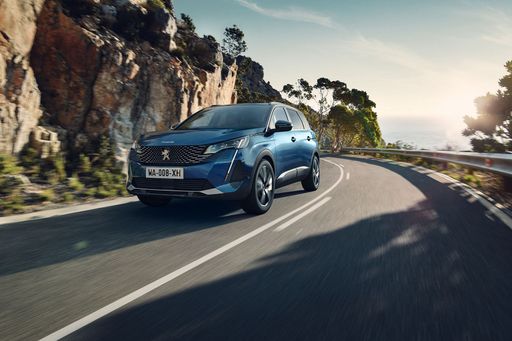 @ media.stellantis.com
@ media.stellantis.com
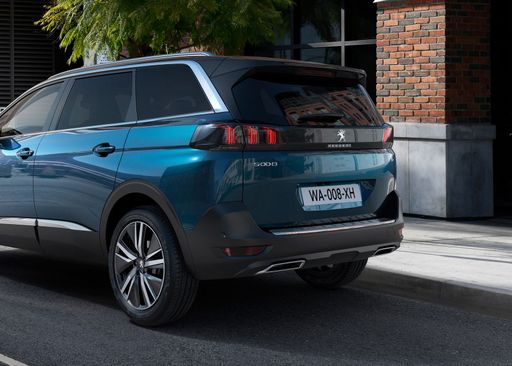 @ media.stellantis.com
@ media.stellantis.com
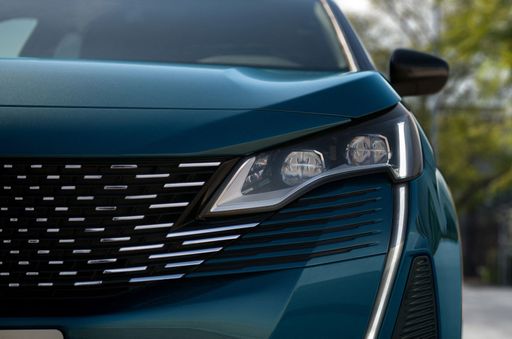 @ media.stellantis.com
@ media.stellantis.com
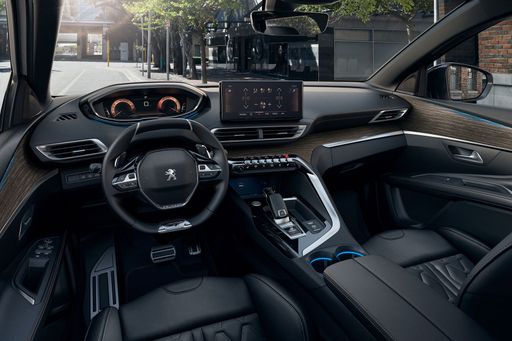 @ media.stellantis.com
@ media.stellantis.com

|

|
|
|
|
Kustannukset ja kulutus |
|
|---|---|
|
Hinta
59800 - 84500 €
|
Hinta
43900 - 62500 €
|
|
Kulutus L/100km
2.8 - 7.7 L
|
Kulutus L/100km
1 - 5.6 L
|
|
Kulutus kWh/100km
-
|
Kulutus kWh/100km
17.8 - 18.6 kWh
|
|
Sähköinen toimintasäde
88 km
|
Sähköinen toimintasäde
79 - 674 km
|
|
Akun kapasiteetti
19.70 kWh
|
Akun kapasiteetti
0.4 - 96.9 kWh
|
|
CO2
64 - 175 g/km
|
CO2
0 - 127 g/km
|
|
Polttoainesäiliön tilavuus
50 - 65 L
|
Polttoainesäiliön tilavuus
55 L
|
Mitat ja kori |
|
|---|---|
|
Kori
SUV
|
Kori
SUV
|
|
Istuimet
5
|
Istuimet
5 - 7
|
|
Ovet
5
|
Ovet
5
|
|
Omamassa
1930 - 2140 kg
|
Omamassa
1700 - 2406 kg
|
|
Tavaratila
460 - 570 L
|
Tavaratila
294 - 994 L
|
|
Pituus
4755 mm
|
Pituus
4791 mm
|
|
Leveys
1920 mm
|
Leveys
1895 mm
|
|
Korkeus
1660 mm
|
Korkeus
1694 mm
|
|
Maksimi tavaratila
1600 - 1700 L
|
Maksimi tavaratila
1815 - 2310 L
|
|
Kantavuus
570 kg
|
Kantavuus
534 - 699 kg
|
Moottori ja suorituskyky |
|
|---|---|
|
Moottorityyppi
Bensiini MHEV, Diesel MHEV, Plug-in hybridi
|
Moottorityyppi
Plug-in hybridi, Sähkö, Bensiini MHEV
|
|
Vaihteisto
Automaatti
|
Vaihteisto
Automaatti
|
|
Vaihteiston tyyppi
Automaattivaihteisto
|
Vaihteiston tyyppi
Kaksoiskytkin automaatti, Alennusvaihteisto
|
|
Vetotapa
Neliveto
|
Vetotapa
Etuveto, Neliveto
|
|
Teho hv
197 - 398 hv
|
Teho hv
145 - 325 hv
|
|
Kiihtyvyys 0-100 km/h
4.6 - 7.8 s
|
Kiihtyvyys 0-100 km/h
6.5 - 10.2 s
|
|
Huippunopeus
215 - 250 km/h
|
Huippunopeus
170 - 220 km/h
|
|
Vääntömomentti
330 - 670 Nm
|
Vääntömomentti
230 - 511 Nm
|
|
Sylinterien lukumäärä
4 - 6
|
Sylinterien lukumäärä
3 - 4
|
|
Teho kW
145 - 293 kW
|
Teho kW
107 - 239 kW
|
|
Iskutilavuus
1995 - 2998 cm3
|
Iskutilavuus
1199 - 1598 cm3
|
Yleiset |
|
|---|---|
|
Mallivuosi
2024 - 2025
|
Mallivuosi
2024 - 2025
|
|
CO2-tehokkuusluokka
F, E, B
|
CO2-tehokkuusluokka
B, A, D
|
|
Merkki
BMW
|
Merkki
Peugeot
|
Millaisia voimalinjoja BMW X3:ssa on saatavilla?
Mallia tarjotaan Neliveto-versiona.
Näytetyt hinnat ja tiedot ovat arvioita, jotka perustuvat Saksan listahintoihin, ja voivat vaihdella maittain. Nämä tiedot eivät ole oikeudellisesti sitovia.
